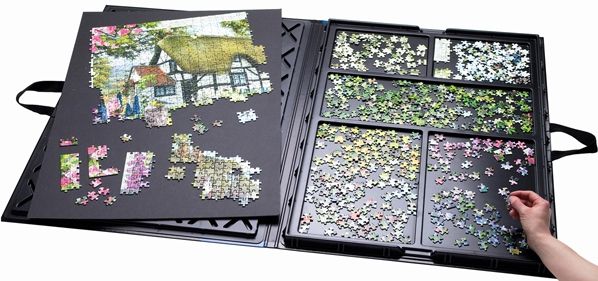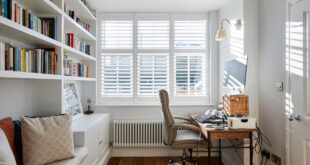The Jigsaw Jungle: Taming Your Puzzle Collection in Style
Let’s face it: puzzles are fantastic. They’re brain-boosting, relaxing (sometimes!), and a great way to spend quality time with family and friends. But what happens when the last piece is placed and the triumphant cheer subsides? The dreaded puzzle storage dilemma. Those half-finished masterpieces, the boxes threatening to burst open, the fear of a rogue piece vanishing into the abyss… it’s a familiar scenario for puzzle enthusiasts everywhere.
Fear not, fellow puzzle lovers! Transforming your living room into a puzzle-friendly zone doesn’t have to mean sacrificing style or space. With a little creativity and some clever storage solutions, you can keep your puzzles organized, accessible, and ready for the next epic challenge. This article dives deep into the world of puzzle storage, offering innovative ideas to declutter your living room and maximize the fun. We’ll explore everything from DIY hacks to stylish furniture options, ensuring your puzzle collection remains a source of joy, not a source of stress.
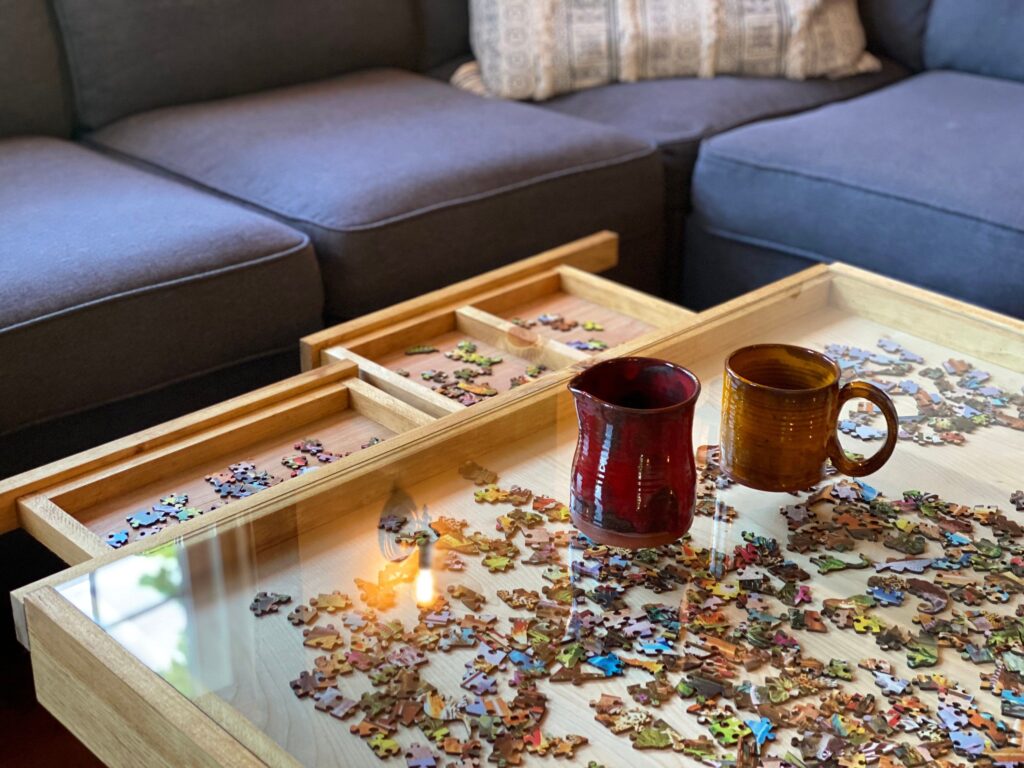
Why Organized Puzzle Storage Matters
Before we jump into the solutions, let’s consider why organized puzzle storage is so crucial. It’s not just about aesthetics; it’s about preserving your investment and maximizing the longevity of your puzzles. Proper storage prevents:

- Lost Pieces: The ultimate puzzle nightmare! Organized storage minimizes the risk of pieces going astray, saving you from the frustration of an incomplete masterpiece.
- Damaged Pieces: Stacking boxes haphazardly can crush or bend delicate pieces. Proper storage protects them from damage, ensuring they remain in pristine condition for years to come.
- Box Damage: Overstuffed or poorly stored boxes can tear, warp, or become unusable. Preserving the original box helps maintain the puzzle’s value and makes it easier to identify.
- Clutter Chaos: Puzzles scattered around the living room create visual clutter and can make it difficult to relax and enjoy your space.
- Accessibility Issues: When puzzles are buried deep in a closet or storage bin, it’s less likely you’ll actually use them. Organized storage makes it easy to browse your collection and choose your next challenge.
In essence, investing in puzzle storage is an investment in your enjoyment of the hobby. It ensures your puzzles are always ready for action, and it keeps your living room a pleasant and inviting space.
Creative Living Room Puzzle Storage Ideas
Now for the fun part: exploring the vast array of puzzle storage options! We’ll cover a range of solutions, from budget-friendly DIY projects to stylish furniture pieces that seamlessly blend into your living room decor.
DIY Puzzle Storage Solutions: Unleash Your Inner Craftsperson
For the budget-conscious and creatively inclined, DIY puzzle storage offers a fantastic opportunity to personalize your solutions and save money. Here are a few ideas to get your creative juices flowing:
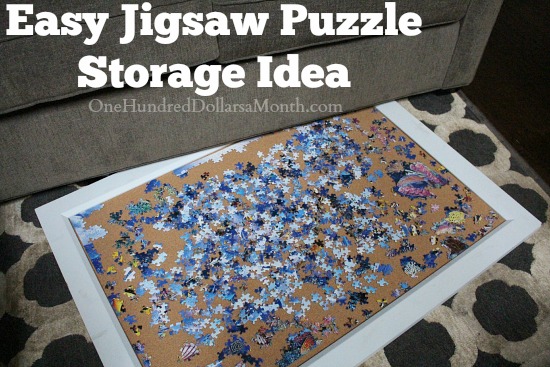
1. Puzzle Rolls and Mats: The Portable Puzzle Paradise
Puzzle rolls and mats are a classic and highly effective solution for storing unfinished puzzles. These typically consist of a felt mat and an inflatable tube. Simply roll up the mat around the tube, securing it with Velcro straps, and your puzzle is safely stored and ready to be transported. They’re perfect for those who don’t have dedicated puzzle space and need to pack up frequently.

Pros: Affordable, portable, easy to use, protects unfinished puzzles.
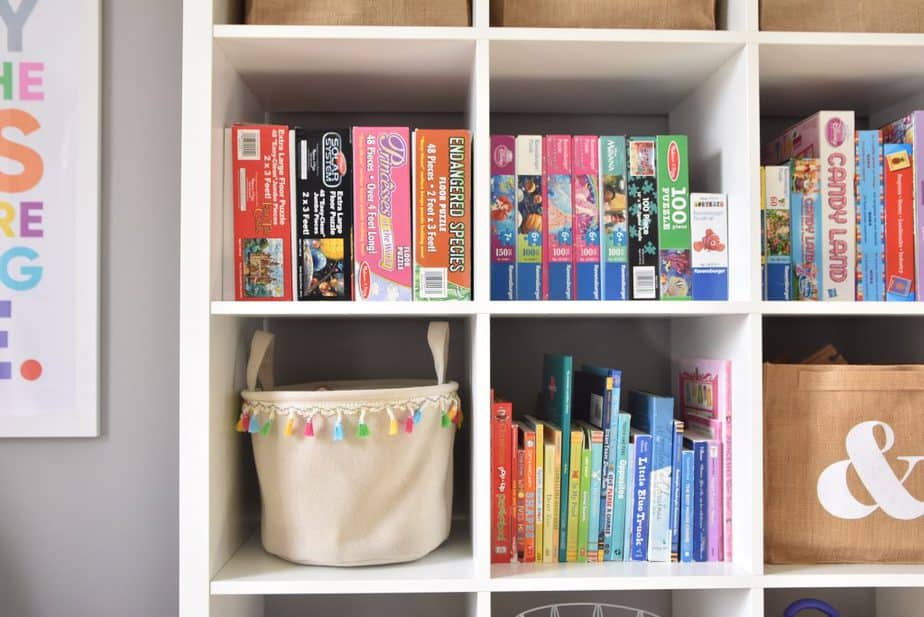
Cons: Not ideal for long-term storage, may not be suitable for very large puzzles, can create creases in the puzzle.
2. Repurposed Portfolio Cases: Artful Puzzle Protection
Large art portfolios, often used by artists and designers, can be repurposed into excellent puzzle storage solutions. These cases typically have a rigid structure and a zippered closure, providing ample protection for puzzle pieces. They’re particularly well-suited for storing completed puzzles that you want to keep intact.
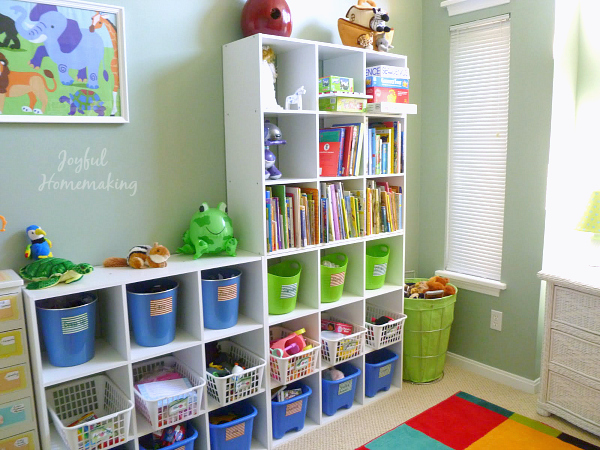
Pros: Sturdy, protective, stackable, can store multiple puzzles.

Cons: Can be bulky, may require some modification to fit puzzle boxes perfectly, might not be aesthetically pleasing for some.
3. DIY Puzzle Storage Bins: Customizable Organization
Creating your own puzzle storage bins is a great way to customize your storage to fit your specific needs and space. You can use a variety of materials, such as cardboard boxes, plastic containers, or even repurposed wooden crates. Decorate them with paint, fabric, or labels to match your living room decor.
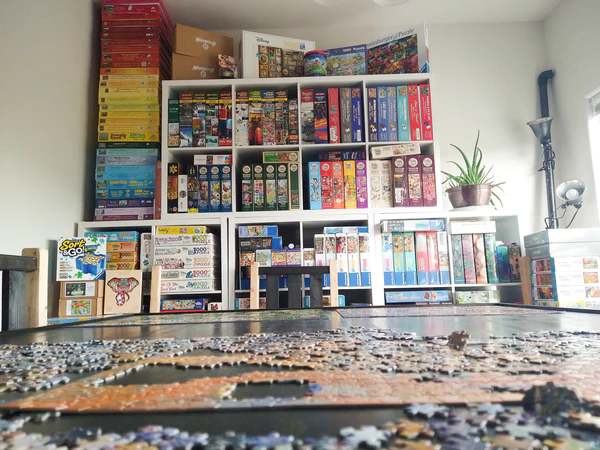
Pros: Customizable, affordable, can be made from recycled materials, allows for flexible storage options.
Cons: Requires some crafting skills, may not be as durable as commercially available options, can take time and effort to create.
4. Hanging Puzzle Organizers: Vertical Storage Solutions
If you’re short on floor space, consider creating a hanging puzzle organizer. This can be as simple as attaching hooks to the wall and hanging puzzle boxes from them, or as elaborate as building a custom shelving unit that hangs from the ceiling. Hanging organizers are a great way to maximize vertical space and keep your puzzles out of the way.
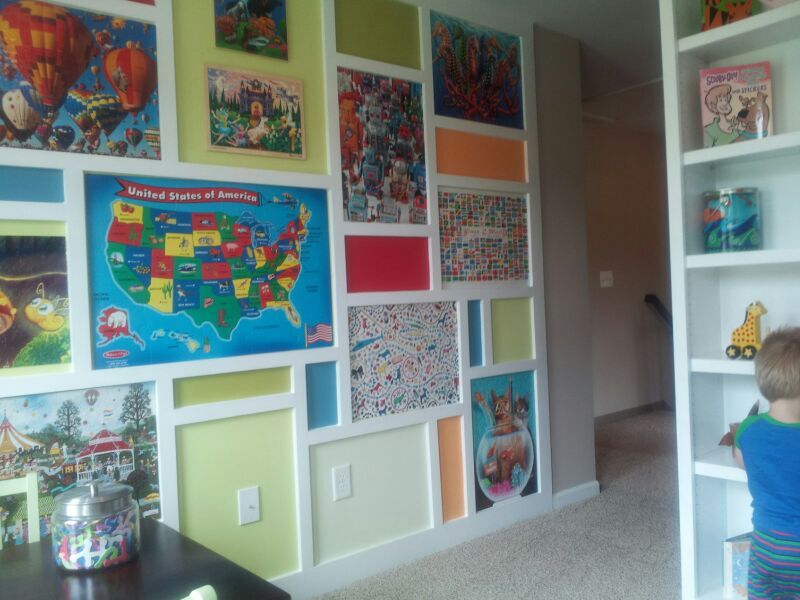
Pros: Saves floor space, visually appealing, can be customized to fit your specific needs.
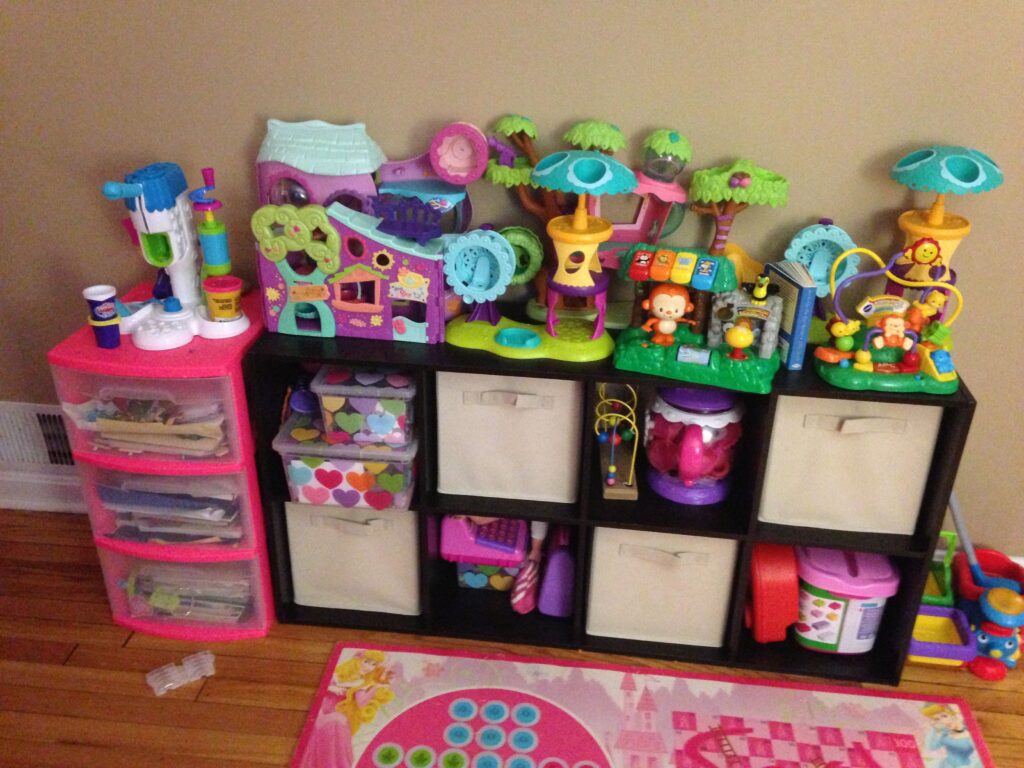
Cons: Requires some DIY skills, may require drilling holes in the wall, not suitable for heavy or bulky puzzles.
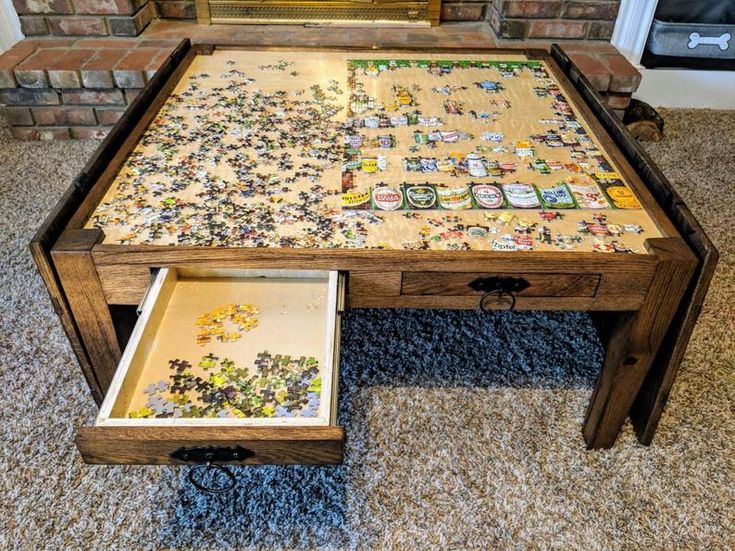
Stylish Furniture Solutions: Puzzle Storage That Blends In
If you prefer a more polished and integrated look, consider investing in furniture pieces that are specifically designed for puzzle storage or can be easily adapted for that purpose. Here are a few options to consider:
1. Puzzle Tables with Built-in Storage: The Puzzle Enthusiast’s Dream
Puzzle tables with built-in storage are the ultimate solution for dedicated puzzle enthusiasts. These tables typically feature a large, flat surface for working on puzzles, along with drawers, shelves, or compartments for storing puzzle boxes and accessories. They provide a dedicated workspace and keep everything organized and within easy reach.
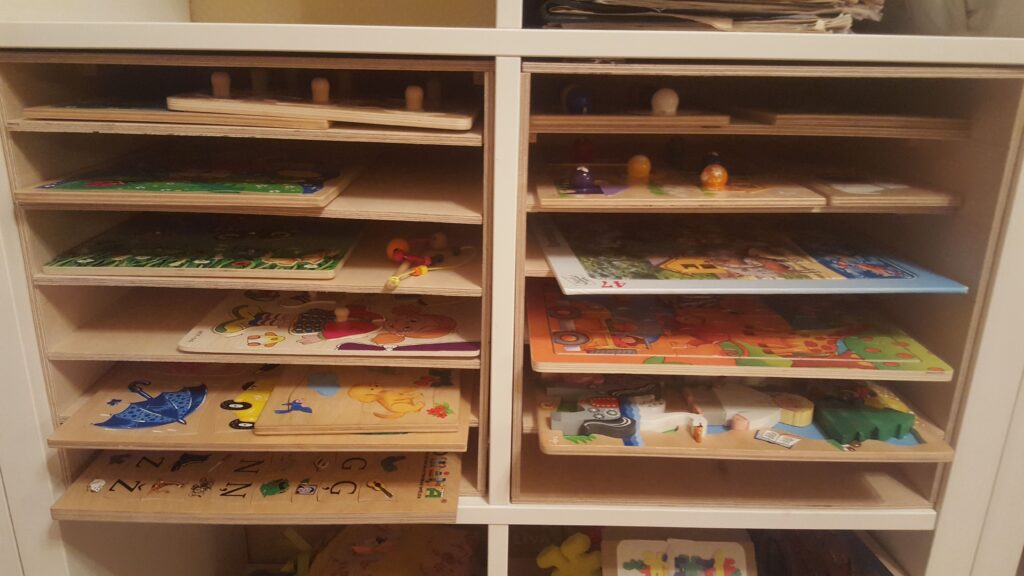
Pros: Dedicated puzzle workspace, ample storage, keeps everything organized, often aesthetically pleasing.
Cons: Can be expensive, takes up significant floor space, may not be suitable for casual puzzlers.

2. Coffee Tables with Hidden Compartments: Storage in Disguise
Coffee tables with hidden compartments are a clever way to incorporate puzzle storage into your living room without sacrificing style. These tables typically feature a lift-top or sliding panel that reveals a hidden storage area underneath. You can use this space to store puzzle boxes, board games, or other living room essentials.
Pros: Multifunctional, stylish, discreet storage, saves space.

Cons: Storage space may be limited, can be expensive, may not be suitable for large puzzle collections.
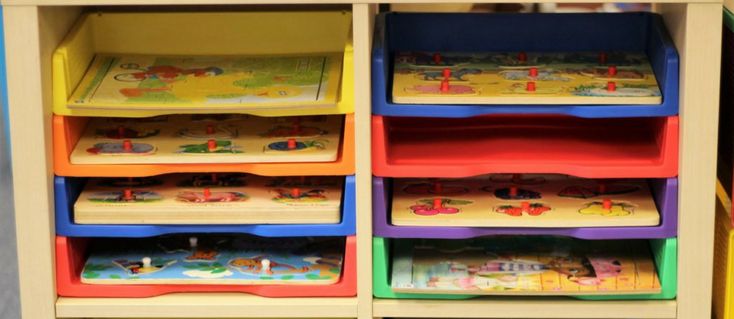
3. Shelving Units and Bookcases: Versatile Storage Options
Shelving units and bookcases are a classic and versatile storage solution for any living room, and they can easily be adapted for puzzle storage. Use shelves to display your favorite puzzle boxes, or store them in decorative baskets or bins. You can also use adjustable shelves to accommodate puzzles of different sizes.
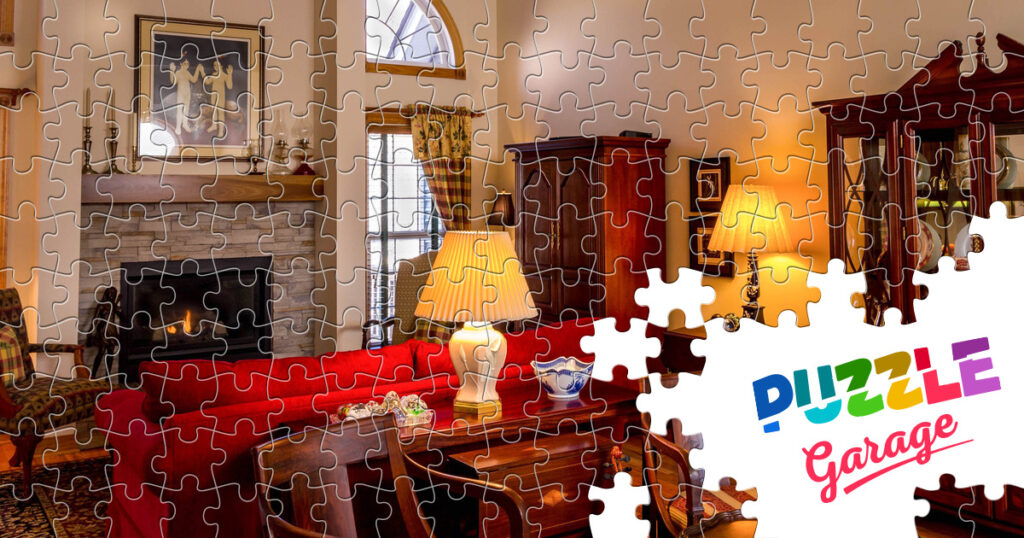
Pros: Versatile, affordable, customizable, can be used for a variety of storage needs.
Cons: May not be specifically designed for puzzle storage, can be visually cluttered if not organized properly.
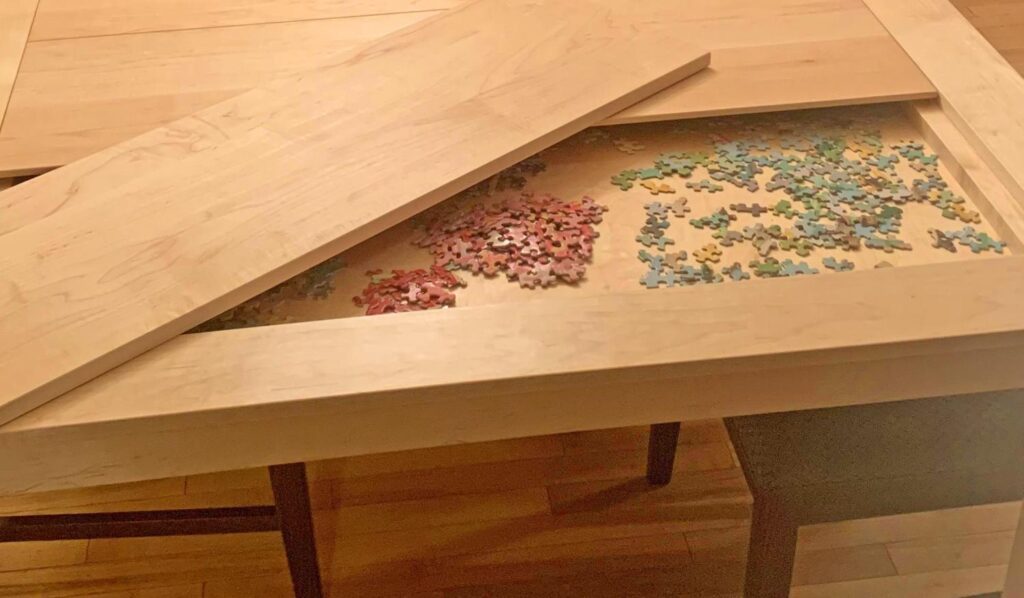
4. Ottomans with Storage: Comfortable and Functional
Ottomans with storage are another great option for adding both seating and storage to your living room. These ottomans typically have a hinged lid that lifts to reveal a spacious storage compartment inside. You can use this space to store puzzle boxes, blankets, pillows, or other living room essentials.
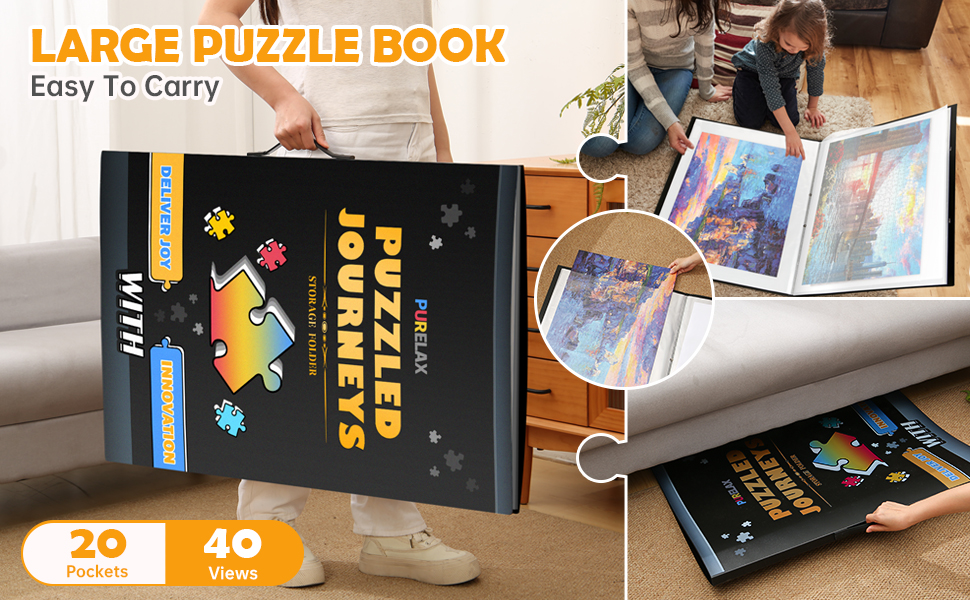
Pros: Multifunctional, comfortable, stylish, provides hidden storage.
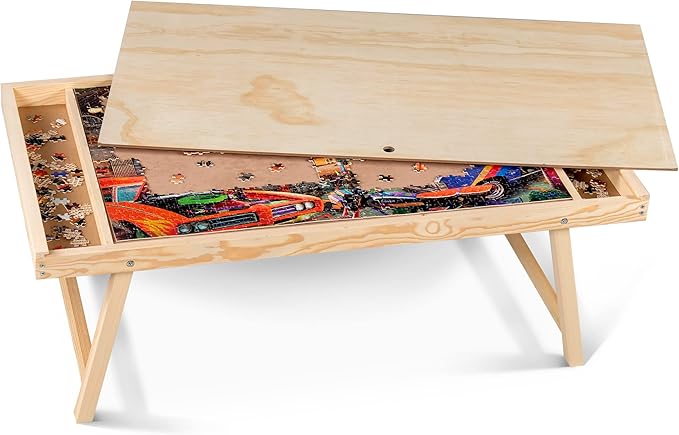
Cons: Storage space may be limited, can be expensive, may not be suitable for very large or bulky puzzles.

Maximizing Living Room Fun with Puzzles
Storing your puzzles is only half the battle. The real goal is to create a living room environment that encourages family fun and puzzle-solving. Here are a few tips to make your living room a puzzle paradise:
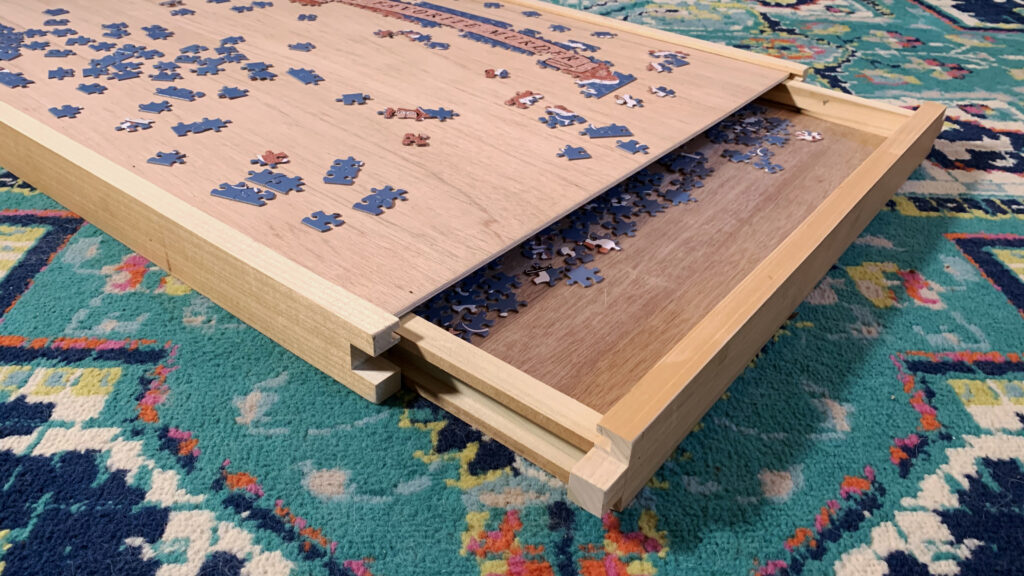
1. Create a Dedicated Puzzle Zone
Designate a specific area in your living room for puzzle activities. This could be a corner of the room, a section of the coffee table, or even a dedicated puzzle table. Having a designated zone makes it easier to set up and pack up puzzles, and it helps to keep the rest of the living room clutter-free.

2. Make Puzzles Easily Accessible
Keep your puzzles within easy reach, so they’re always ready for a spontaneous puzzle session. Store them on shelves, in drawers, or in decorative baskets that are easily accessible to everyone in the family.
3. Encourage Family Participation
Make puzzle-solving a family affair. Invite everyone to participate, regardless of their age or skill level. Assign different tasks, such as sorting pieces, finding edges, or assembling specific sections of the puzzle. Celebrate successes and encourage teamwork.
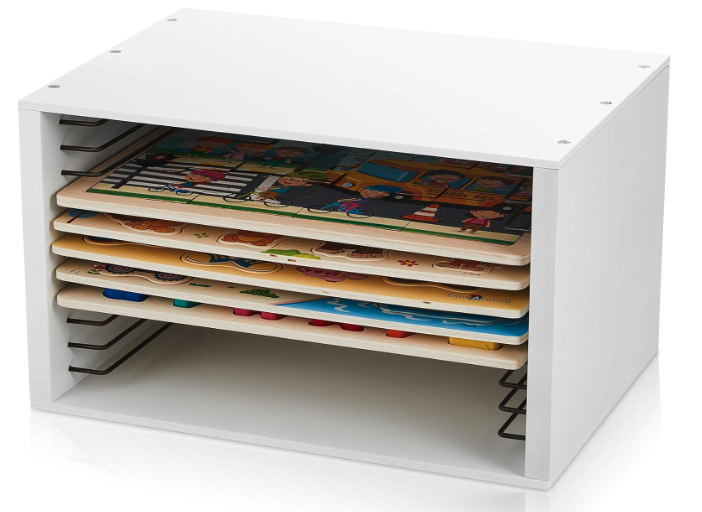
4. Rotate Your Puzzle Collection
Keep things fresh by rotating your puzzle collection regularly. This prevents boredom and ensures that you’re always discovering new and exciting puzzles. You can rotate your puzzles monthly, seasonally, or even weekly, depending on your preferences.
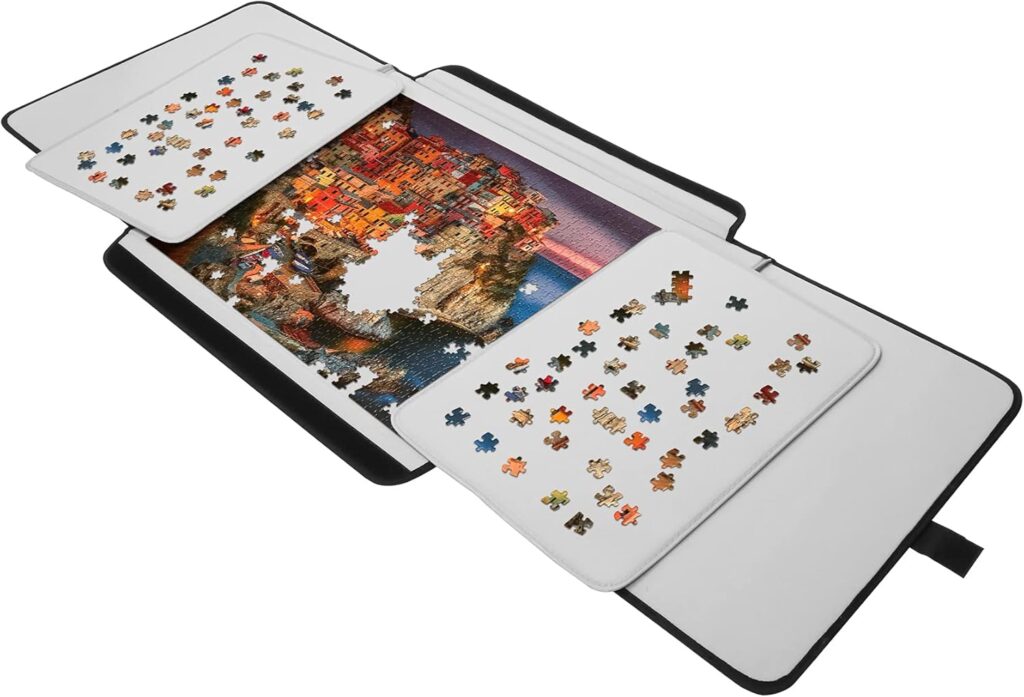
5. Create a Cozy and Inviting Atmosphere
Make your living room a cozy and inviting space where everyone feels comfortable spending time. Add soft lighting, comfortable seating, and plenty of blankets and pillows. This will create a relaxing atmosphere that encourages puzzle-solving and family bonding.
Beyond the Box: Creative Puzzle Activities
Once you’ve mastered the art of puzzle storage and created a puzzle-friendly living room, it’s time to explore some creative puzzle activities that go beyond the traditional jigsaw puzzle. Here are a few ideas to spark your imagination:
1. Puzzle Swaps: Share the Puzzle Love
Organize a puzzle swap with friends, neighbors, or family members. This is a great way to expand your puzzle collection without spending a lot of money, and it allows you to try out different types of puzzles.
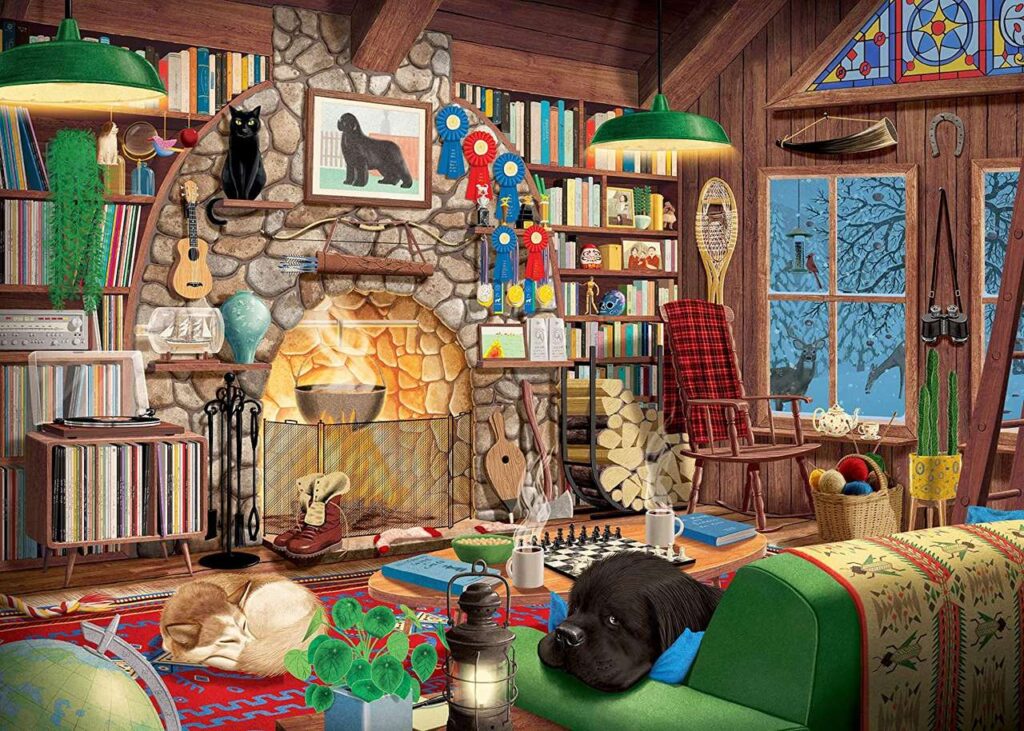
2. Puzzle Challenges: Test Your Skills
Challenge yourself and your family to complete a puzzle within a specific timeframe. You can set a timer, create a leaderboard, and award prizes to the winners. This is a fun and competitive way to improve your puzzle-solving skills.
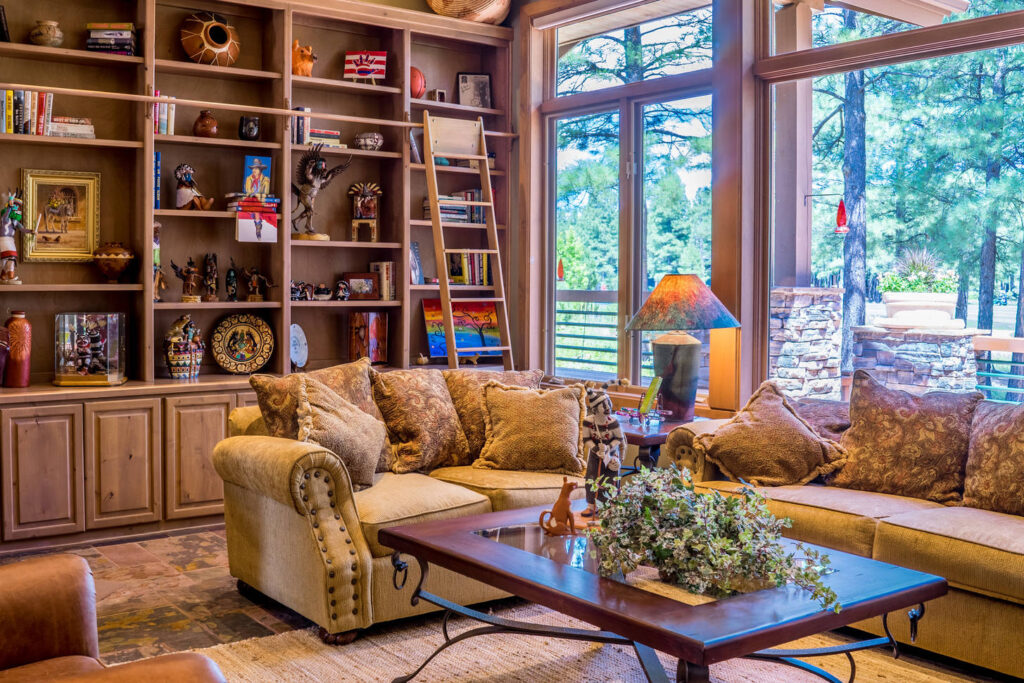
3. Puzzle-Themed Parties: Celebrate the Art of the Jigsaw
Throw a puzzle-themed party for your friends and family. Decorate with puzzle pieces, serve puzzle-shaped snacks, and play puzzle-related games. This is a unique and memorable way to celebrate your love of puzzles.
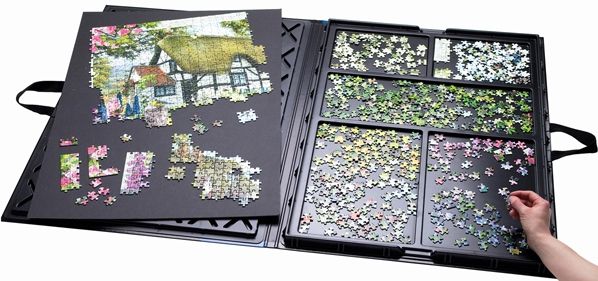
4. Upcycle Completed Puzzles: Turn Trash into Treasure
Don’t let your completed puzzles gather dust in a closet. Upcycle them into unique and creative art projects. You can use puzzle pieces to create mosaics, collages, or even jewelry. The possibilities are endless!
5. Donate or Gift Unwanted Puzzles: Spread the Puzzle Joy
If you have puzzles that you no longer enjoy, consider donating them to a local charity, school, or library. You can also gift them to friends or family members who might appreciate them. Sharing your puzzles is a great way to spread the puzzle joy and declutter your home.
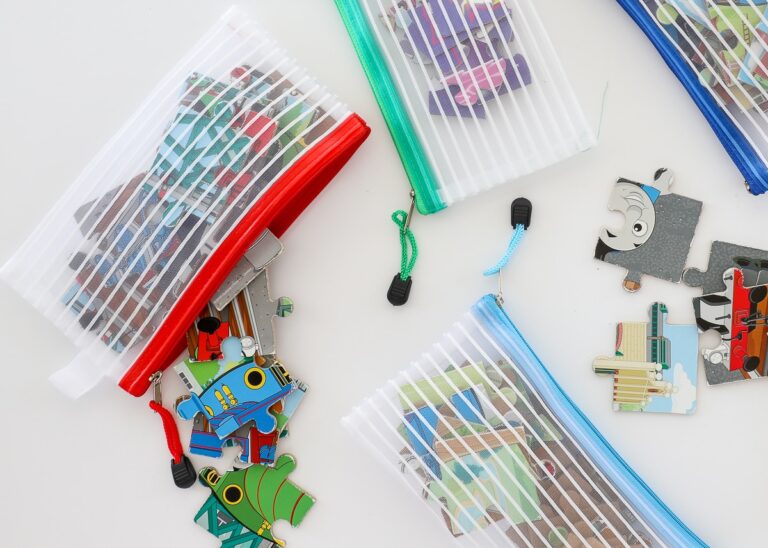
The End Piece: A Puzzle-Perfect Living Room
Creating a puzzle-friendly living room is all about finding the right balance between storage, style, and fun. By implementing the ideas and tips outlined in this article, you can transform your living room into a space that encourages family bonding, stimulates creativity, and celebrates the art of the jigsaw puzzle. So, embrace the challenge, unleash your inner puzzler, and create a puzzle paradise in your own home!
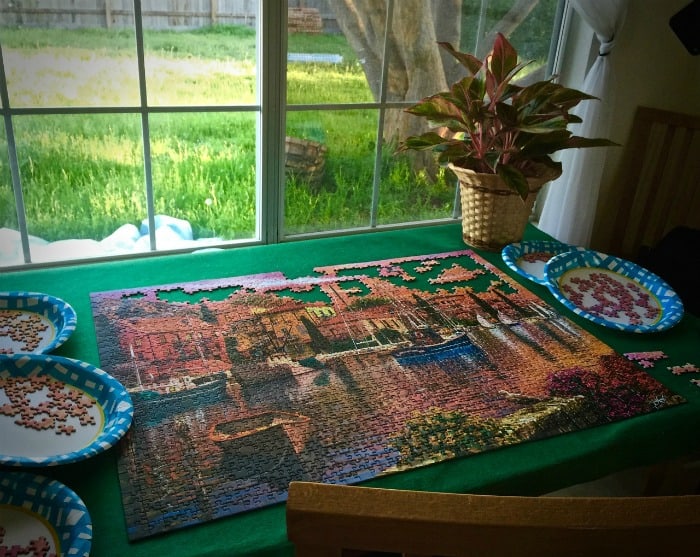
Remember, the most important thing is to have fun and enjoy the process. Puzzle-solving is a rewarding activity that can bring joy and connection to your life. With a little planning and creativity, you can create a living room that is both organized and inspiring, a place where memories are made one piece at a time.
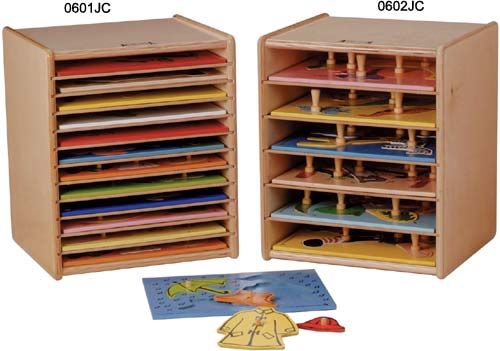
 Nimila
Nimila
